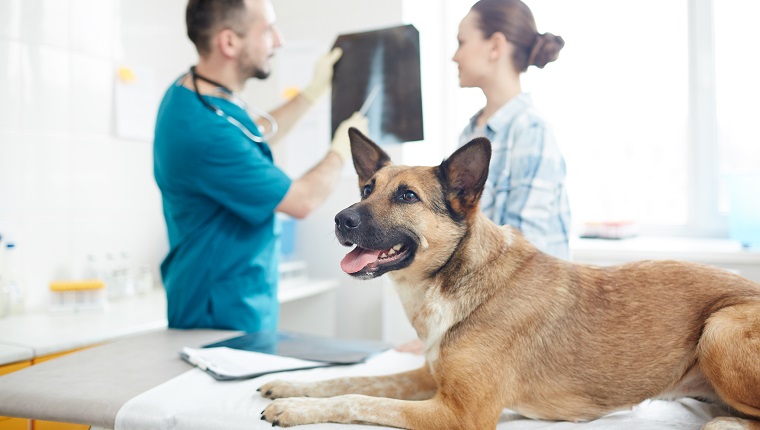Hypertrophic osteopathy in dogs is a medical condition that can cause a swelling of the limbs. It results from extra growth of the tissue outside of the bones.
This condition can affect other pets, including cats, and also even humans. In many instances, it can be mistaken for a case of arthritis.
If you see signs that your dog might be suffering from bone overgrowth, then you must consult your veterinarian for a proper diagnosis and course of treatment. Here’s what you should know about the symptoms, causes, and treatments of hypertrophic osteopathy in dogs.
Symptoms Of Hypertrophic Osteopathy In Dogs
Hypertrophic osteopathy in dogs primarily presents itself as swollen limbs. Some of the other most common symptoms include:
- Feeling lethargic
- Pain around the limbs
- Not moving around as much as usual
- Losing appetite and losing weight
Causes Of Hypertrophic Osteopathy In Dogs

The precise cause of hypertrophic osteopathy in dogs unknown. Some of the factors that have been speculated to be causes that can contribute to the development of bone overgrowth include:
- Heartworm
- Pneumonia
- Tumors on the liver, lungs and bladder
- Various chronic infections
In general, certain breeds of dog, such as Boxers, seem to have a higher likelihood of developing this condition than other dogs. Additionally, female dogs and middle-aged canines are more at risk than younger male pups.
Veterinary Treatments
If you suspect that your dog is developing hypertrophic osteopathy, then your veterinarian will want to ask a series of questions about their medical history and any symptoms. They’ll carry out a full physical examination and order blood and urine tests.
In many suspected cases, X-rays of the bone and examination of bone samples can prove vital in diagnosing the condition.
When providing treatment, it is vital to target the underlying cause of the condition. This might involve the use of medication and painkillers.
As ever, if your vet prescribes your dog any medicine, it is vital that you stick to the precise dosage and frequency instructions, along with completing the full course of medication.
Dogs who are recovering at home should have a calm and uncluttered environment. Many dogs need continued pain therapy measures while the bones recover.
Has your dog developed hypertrophic osteopathy? How are you and your vet helping your pet recover? Tell us all about it in the comments below.









